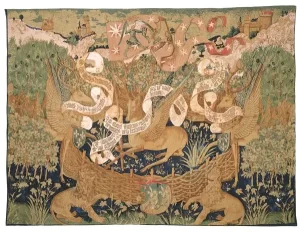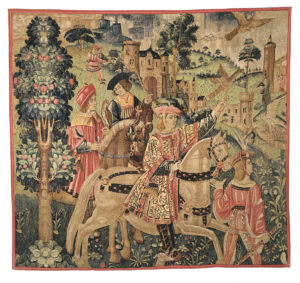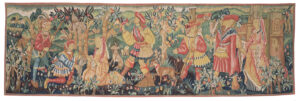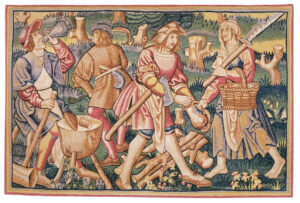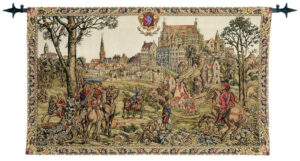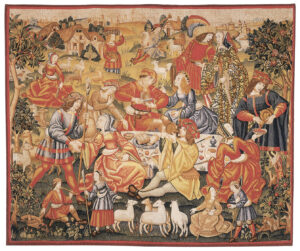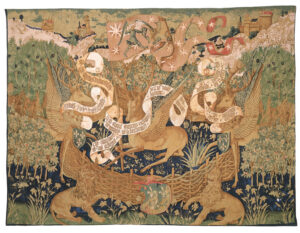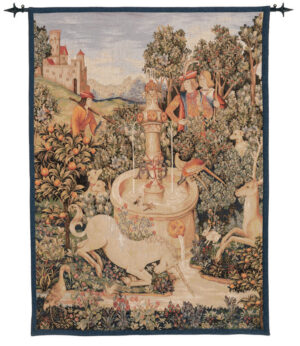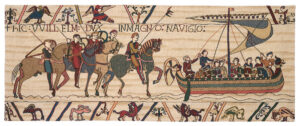In Norman times, tapestries were usually commissioned by royalty or nobility and depicted important events or activities, being used often as much for practical purposes as for decoration.
The Norman invasion of England in the year 1066 was led by William, Duke of Normandy, who claimed that he was the rightful King of England even though Harold, Earl of Wessex, had already been crowned following the death of King Edward. King Harold led the English Saxons to oppose the Norman invasion, but was defeated at the historic Battle of Hastings. The Bayeux Tapestry was produced subsequently to commemorate the Battle and the events which led up to it.
Tapestries have been produced in Europe for at least eight centuries. In the Middle Ages tapestry-weaving became an increasingly important industry, with thousands of weavers engaged in this work, tapestries then being used as much for practical purposes as for decoration. Designs were usually commissioned by royalty or nobility, and depicted important events or activities.
Tapestries are suitable for entrance halls, dining areas, lounge rooms and other areas of your home where an object d’art can be appreciated.
Tapestries from Fleur de Lys are high quality works of art and are suitable for entrance halls, dinning areas, lounge rooms and other areas of your home where an object d’art can be appreciated
Due to the nature of tapestry fabric, nobility and scholars throughout history have collected and preserved these works of art. Now you can see these works of art in palaces and museums throughout the world. Or you can own a piece of history and culture to savour and preserve for yourself.

